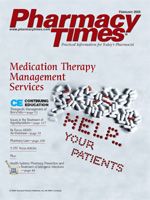Publication
Article
Pharmacy Times
Noncardiac Chest Pain Misunderstood
The economic, social, and functional burden of noncardiacchest pain (NCCP) is poorly understood. In a study recentlypublished in Alimentary Pharmacology & Therapeutics (October2004) by G.D. Eslick, MMS, and N.J. Talley, MD, 212patients presenting with acute chest pain in a tertiary hospitalemergency department were evaluated. NCCP was diagnosedin 64%, and cardiac chest pain (CCP) was diagnosedin 36%. The prevalence of NCCP was higher in men (54%)than in women (46%), increased in both sexes between theages of 18 and 59, and declined in older age groups. NCCPwas severe (affects lifestyle) in 32% of patients and moderate(does not affect lifestyle but cannot be ignored) in 41%. Proportionsof patients seeking health care during the preceding12 months were similar for NCCP (77%) and CCP (70%).
The frequency of physician consults was lower amongNCCP than CCP patients. Men were more likely than womento seek medical consultation for NCCP. The most commonreasons for seeking medical care were anxiety about symptoms,fear of a more serious condition, and severity of pain.The type of health care professional consulted was determinedby the frequency and severity of reflux symptoms thataccompanied chest pain.







